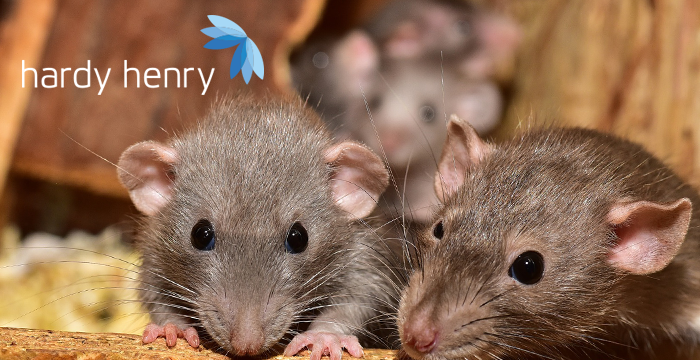Since Antiquity, the month of February has been associated with love and fertility. As a matter of fact, we are not the only ones to declare our flame. It is also the mating season (and the anxiety season for you…) for everything that crawls or flies.
Heat and frequent heavy showers are idyllic conditions for mosquitoes and other unlovable creatures to get up close and personal. Pests are not great romantics and are quick to get down to business. And if you’re wondering how fast some breed, keep on reading to find the answers.
Rats – Love forever
Rats don’t wait for Valentine’s Day to give free rein to their romance and breed throughout the year. Females start being pursued from the age of 2 months old and can have five litters per year, with an average of 7 pups each time. Her gestation lasts 24 days. Just for fun, let’s do the maths … in theory, a couple of rats could end up with quite a high number of descendants, i.e. 5,000 beautiful little rats over a year!
Termites – Love is in the air
In the termite world, the female is a queen. As the temperature rises, sexually mature termites with wings leave their nest to form new colonies. In a “nuptial flight”, males and females fly together, form pairs and breed in the air. Isn’t it romantic? The fertilised females then have the mission of finding a new place in order to start their colonies, of which they will become the queens. They then become an egg-laying “machine” producing many thousands during their lifetime. (1 egg every 2 seconds for an average of 15 years) and can reach up to 12 cm.

Mosquitoes – Love at first flight
When it comes to dating, it is the female mosquitoes who serenade the males. Indeed, the buzzing that annoys us so much, is only produced by the females and would in fact be a loving song that allows the males to spot them. Like termites, mosquitoes love acrobatics and most often mate in the air, shortly after sunset, a few metres from the ground. Unlike male mosquitoes, which will continue to mate until they die, most female mosquitoes will mate just once. She will then go and feed herself. They typically produce one batch of as much as 200 eggs for every blood meal they take. On average, a female mosquito lives for about 2 months, during which she will lay 5 times 150 eggs. The male mosquito is less lucky and will only survive a few days.
Cockroaches – Love is blind
These unattractive creatures can live for several weeks without food, but water is essential for their survival. Far from prying eyes, hidden in dark, warm and humid places, cockroaches enjoy perfect love and breed all year. The female lays egg cells (bags) which can contain about 35 nymphs (eggs) which develop inside and become adults a hundred days later. The female can reproduce 5 to 6 times a year, making cockroaches population develop fast.
Here is our little glimpse into the love life of some of your favourite pests. They will all live happily ever after and will have lots, LOTS of children. Unless, of course, you give us a call! 😉 Happy Valentine’s day!

